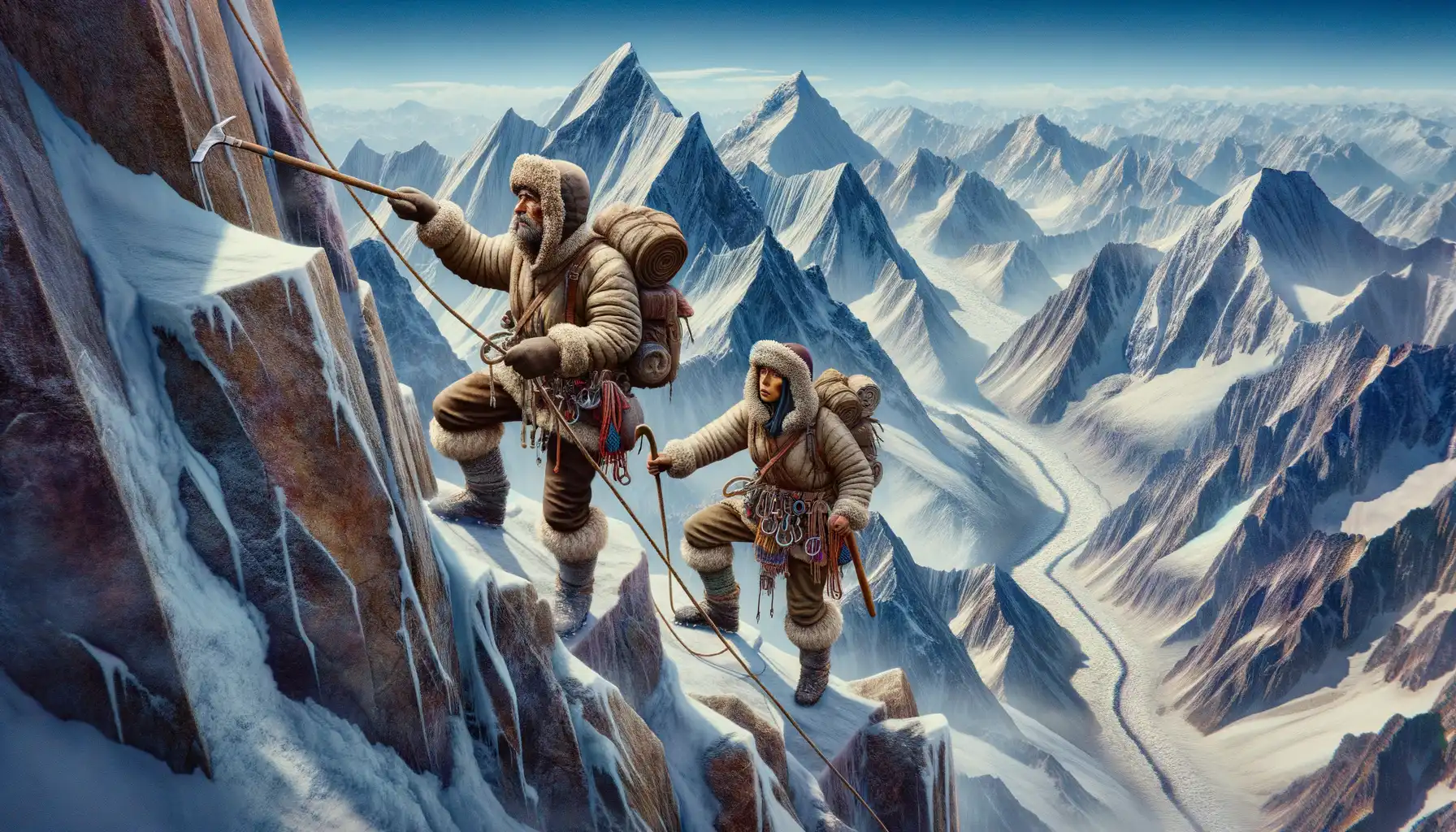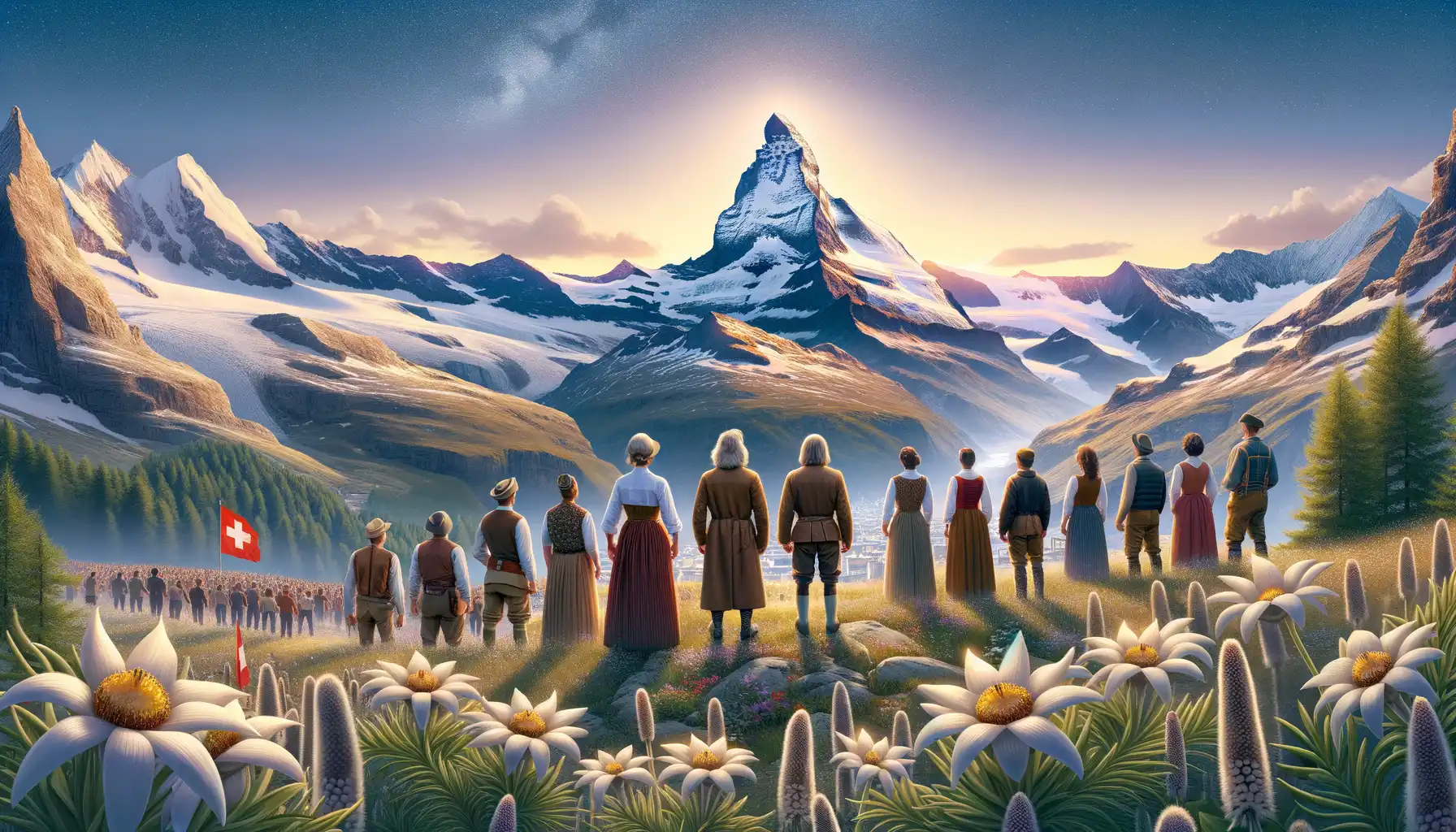Origins and Geological Formation of the Matterhorn
A Collision of Continents: The Birth of the Matterhorn
The iconic Matterhorn, standing proud at 4,478 meters, didn’t simply emerge overnight—it was born of chaos, violence, and unimaginable pressure. Around 50 million years ago, two colossal landmasses, the ancient African and European tectonic plates, collided in a slow-motion crash that spanned millennia. This wasn’t just geology; it was nature’s fiery artistry. The African plate pushed upward, shattering rock and thrusting it to dizzying altitudes, while the immense pressure sculpted that unmistakable pyramid-shaped peak.
But here’s where it gets even more fascinating: the upper part of the Matterhorn is made of African rock, while its base belongs to Europe. It’s as if two continents chose this mountain as their meeting point, forever intertwined. Can you imagine standing atop the summit, caught between two entirely different geological worlds?
Layers of Time Trapped in Stone
Take a closer look at the jagged slopes, and you’ll uncover whispering layers of history:
- Gneiss and granite, shaped by intense heat and pressure deep in the Earth’s crust.
- Ancient sedimentary rocks, remnants of ancient seas that vanished millions of years ago.
- Glacial carvings, evidence of icy rivers slowly slicing through stone during the Ice Ages.
Every crack, every ridge tells a story of endurance and transformation—the scars of a mountain forged in fire and ice.
First Ascents and Alpinism History

The Birth of a Mountaineering Legend
They called it the “unclimbable mountain.” For centuries, the Matterhorn, with its fierce, jagged silhouette slicing through the Alpine sky, stood untouched—majestic and defiant. But that all changed on July 14, 1865, when a daring group of mountaineers, led by the ambitious Edward Whymper, etched their names into history books by triumphantly conquering its summit. Every step they took was a gamble against gravity and fate, yet they succeeded where so many others had failed—or perished trying.
The joy of reaching the peak, however, turned to tragedy on the perilous descent. Four climbers fell to their deaths, tethered together as they plummeted down the icy slopes. That rope? It snapped. The shredded remains are still displayed in Zermatt today, a grim reminder of the risks these pioneers faced.
How Alpinism Changed Forever
What followed Whymper’s ascent was nothing short of an alpine revolution. The Matterhorn became the crown jewel for adventurers seeking both glory and proof of human resilience. Key trends emerged:
- The rise of organized expeditions, emphasizing teamwork and local guides.
- Technological innovations like crampons, ice axes, and (thankfully) stronger ropes.
- An explosion in mountaineering’s popularity, transforming it from a noble pastime to a global phenomenon.
This razor-sharp peak is more than just a mountain; it’s a proving ground, a place where grit meets gravity.
Cultural and Symbolic Importance of the Matterhorn

The Matterhorn in Myth, Art, and Heart
The Matterhorn isn’t just a mountain—it’s a muse, a symbol of untamed beauty that has captivated imaginations for generations. For many, its sharp, pyramid-like silhouette rising defiantly against the sky is more than a geological wonder; it’s a canvas for human stories and emotions.
In Switzerland, the Matterhorn has become a national emblem, appearing on everything from chocolate wrappers to postage stamps. It’s an icon woven into the very fabric of Swiss pride. Beyond its borders, artists like Ferdinand Hodler painted it with reverence, capturing its icy majesty in ways that resonate with viewers worldwide.
A Spiritual and Cultural Beacon
But here’s what makes the Matterhorn truly magical: its ability to evoke a deep, almost spiritual connection. Local myths tell of gods and spirits dwelling in its shadow, while climbers often describe their time on its slopes as transformative. It’s no wonder the peak symbolizes:
- Resilience: Standing tall through storms and centuries.
- Adventure: Beckoning explorers to push limits.
- Triumph: A metaphor for conquering life’s toughest challenges.
For those lucky enough to see it, the Matterhorn is more than rock and ice—it’s pure inspiration, carved by nature itself.
Tourism and Economic Impact in the Region

The Matterhorn Effect: How Tourism Fuels Local Prosperity
There’s no denying it: the Matterhorn isn’t just a mountain; it’s an economic heartbeat for the entire region. Every year, countless travelers pack their dreams and head to this Alpine icon, leaving behind much more than footprints. They leave opportunities, growth, and prosperity for the communities nestled in its shadow.
Picture this: a family-run chalet in Zermatt welcoming visitors from across the globe, or a local guide sharing generations of mountaineering stories. These aren’t just transactions—they’re human connections that power livelihoods. From cozy restaurants serving steaming plates of raclette to bustling ski rental shops, these businesses thrive because of the Matterhorn’s magnetic allure.
- The hospitality industry—from boutique hotels to rustic lodges—creates thousands of jobs.
- Ski passes, climbing tours, and souvenir shops pour millions into the regional economy each year.
- Festivals like the annual Zermatt Unplugged festival foster cultural and tourism synergy, drawing massive crowds.
Tourists don’t just come to see the mountain; they spend on experiences like paragliding, helicopter tours, and guided hikes. And those postcard-perfect Instagram shots? They’re unpaid ads, drawing even more curiosity—and wallets—to this majestic destination.
Modern Challenges and Conservation Efforts

Balancing Adventure and Environmental Responsibility
The Matterhorn, with its majestic silhouette and enduring allure, faces modern challenges that demand urgent attention. Today, it’s more than just climbers who rely on this iconic peak—entire ecosystems depend on its stability. But here’s the catch: climate change is turning up the heat, quite literally. Glaciers that once wrapped the mountain like frosty armor are retreating at an unprecedented speed, altering landscapes and threatening local biodiversity.
And let’s not forget about humanity’s footprints. Increased tourism means more waste, more erosion, and greater strain on resources. It’s like hosting a party for millions every year while trying to keep the house spotless—no easy feat. This is where conservation becomes a team effort between tourists, locals, and global advocates.
- Eco-trails are being created to minimize the impact of foot traffic.
- Initiatives like carbon-neutral accommodations are setting new sustainability standards.
- Local wildlife is being monitored to ensure their survival amidst shifting climates.
Do Small Steps Create Big Changes?
Imagine this: you take a guided hike around the Matterhorn and notice stations offering biodegradable hiking bags. Tiny detail, right? Yet, these small changes ripple outward. Conservationists are now calling for stricter limits on visitor numbers, much like a velvet rope at an exclusive club entrance—because protecting the natural wonder of the Matterhorn isn’t optional; it’s essential.
The mountain may be timeless in appearance, but its challenges remind us how fragile even the mightiest peaks are. Together, through conscious choices and brilliant innovations, we can ensure the Matterhorn stands proud for generations to come.
